A pin nailer is a handheld tool that is used to drive small nails into wood. These nails are typically about ½ inches long, and they are used to attach thin pieces of wood together or to attach the trim to a surface. Pin nailers can be used in both hard and soft woods, and they are a great choice for projects that require the precision placement of nails.
What are the benefits of using a pin nailer?
Using a pin nailer has several benefits over using a hammer or other manual methods of driving nails [1]:
- Pin nailers are much easier to use and allow for more precision when placing nails. This is especially important when working with thin pieces of wood or attaching trim;
- In addition, pin nailers are less likely to split or damage the wood than other methods;
- Finally, using a pin nailer can save you time and effort on your project;
Pin nailers are very easy to use, and they can be a great alternative to using a hammer for small projects. If you need to attach two pieces of wood together, or if you need to add some trim to a surface, a pin nailer can help you get the job done quickly and easily.
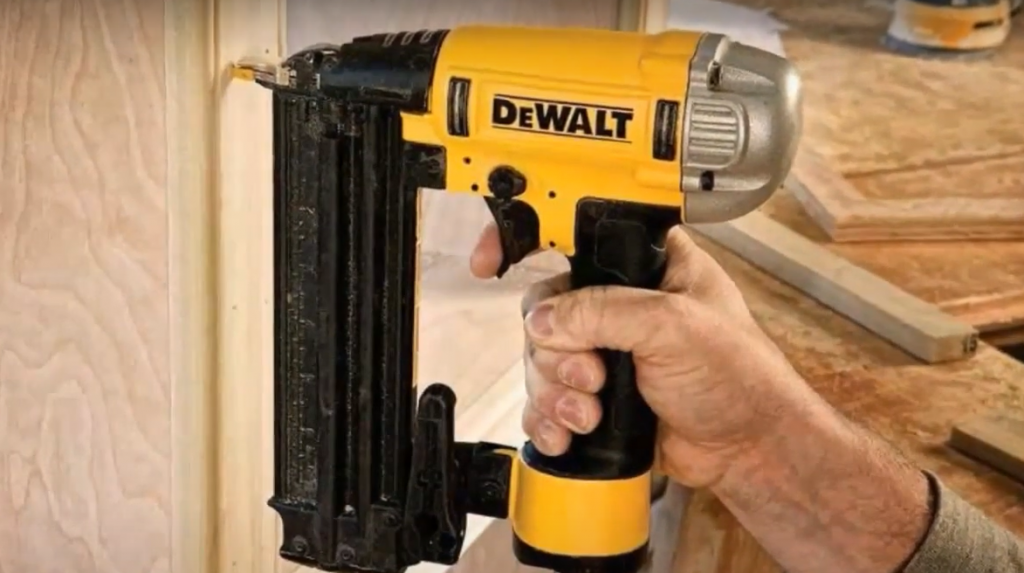
Just be sure to read the instructions that come with your pin nailer before using it, so that you understand how it works and how to properly use it.
Below our experts will provide answers to some of the most frequently asked questions about pin nailers. If you have any other questions, feel free to reach out to us and we will be happy to help.
What Is a Pin Nailer?
A pin nailer is simply a nail gun that fires extremely tiny nails. In general, these nailers are comparable to any other nail gun. They’re usually pneumatic, so you’ll need an air compressor to operate them.
By pushing the tip of the nail gun into your material and pulling the trigger, you fire a rack of nails into your work. The nail is driven just below the surface of the wood so that it’s not visible, and the depth can be adjusted with depth control. However, when compared to other nail guns, pin nails are what set this one apart [2].
The same sort of ultrathin metal fasteners are shot by all pin nailers.
However, not every type can handle all lengths. The diameter of a 23-gauge pin is comparable to that of a sewing needle, which is why pin nailers are so useful. Pin nailers can easily pierce the hardest hardwoods because of their small diameter.Despite their lack of heads, the pins have surprising holding power. Add a little glue to your pinned joints and use the pins as clamps in many cases for maximum durability.
When it comes to small and medium-size molding on cabinets, furniture, and interior millwork, the pinner shines. Clamps may not be as effective as nails in holding molding because it has an uneven form and is difficult to grip while the glue dries. Nails are also hazardous since nail holes appear unsightly even after filling them. A few pins from a 23-gauge nailer, on the other hand, can hold components together without leaving a mark [3].
Not only do light wood pieces make excellent pin nailer subjects, but there are a variety of other materials that will benefit from this type of device. Even firmly applied clamping pressure can cause the components to slide when joining and clamping big pieces of wood together precisely. A few shots with a pin nailer, on the other hand, solve this issue. The pins keep the glue-covered wooden parts from moving side to side.
Pin nailers are delicate tools that require finesse in use. A significant portion of their success is due to their ability to produce pins in precisely the right spot. The business end of a pin nailer is usually quite different from other pneumatic fastening devices. Other nailers have a retractable “nose-piece” that must be pressed against the workpiece before the gun will fire, but pinners typically do not.
Most manufacturers consider this arrangement too bulky to allow for complete viewing of the gun tip. Instead, most pin nailers employ a two-trigger mechanism to prevent accidental misfires. To use the tool, you must first press one trigger and then a second trigger when you want to fire. The way in which a particular pinner works is heavily influenced by the design of its safety-interlock system.
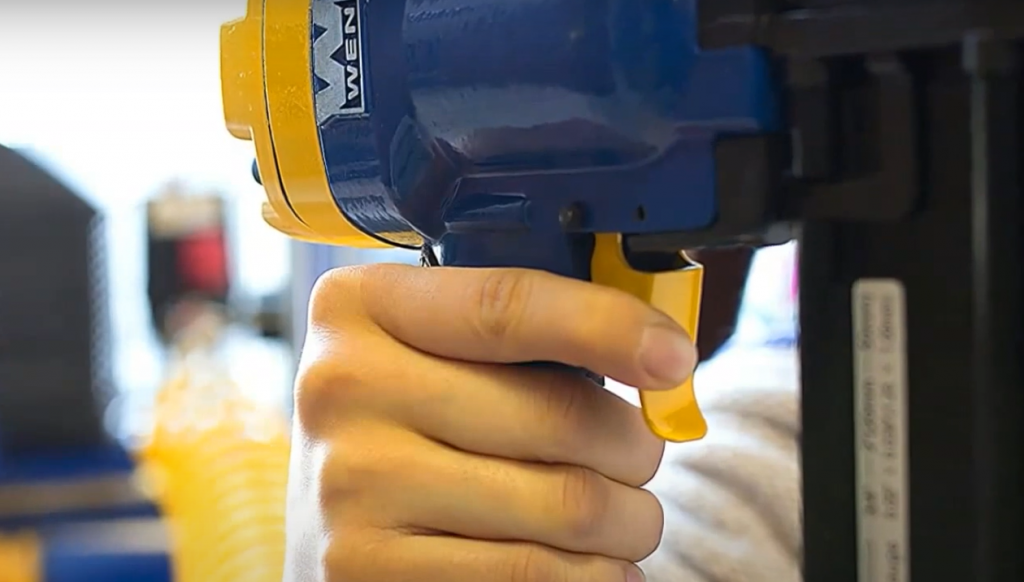
Although a pin nailer is unlikely to be the first pneumatic fastening tool you should purchase for your workshop, it may end up being the second. The primary reason for this is that pin nailers are faster than other types of pneumatic tools. Pin nailers are not new tools – they’re here to stay.
What Gauge Is A Pin Nailer?
Pin nailers are powerful tools that can drive tiny nails or fasteners into hardwoods quickly and efficiently. They’re generally 23 gauge nails. The smaller the gauge number, the thicker the nail. So, a 23-gauge pin is thinner than a 22-gauge pin. And a 21-gauge pin would be even thicker than that [4].
How Do You Load A Pin Nailer?
You may either side-load or bottom-load your pin nailer. The simplest way to reload your pin nailer is with the side-loading function. To do this, open the side panel of the gun and insert the desired amount of fasteners. Close the side panel and you’re ready to go.
Bottom-loading pin nailers are a little more complicated. To reload one of these guns, you’ll need to first remove the magazine cap. Next, insert your fasteners into the loading channel. Once they’re in place, replace the magazine cap and you should be good to go.
While both types of pin nailers have their advantages and disadvantages, bottom-loading models generally tend to be less expensive than their side-loading counterparts. In addition, bottom-loading guns are typically easier to reload than side-loaders.
The Most Common Uses of Pin Nailers
Pinning into corners and crevices
One of the most common uses for a pin nailer is to help you put nails into tight spots. If you’re working on a project that has lots of small pieces that need to be attached together, a pin nailer can come in handy.[5]
It can be difficult to get regular nails into corners and other tight spaces, but with a pin nailer, it’s much easier. You can quickly attach all of the small pieces together without having to worry about them falling out or coming loose over time.
Attaching molding or trim
A pin nailer can be used to fasten molding or trim to walls, ceilings, or other surfaces. The tiny nails contribute to a smooth, finished appearance.
Hanging pictures
If you’re hanging pictures in your home, a pin nailer can be a big help. The small nails are less likely to damage the wall, and they’ll hold the picture in place just as well as regular-sized nails.
Securing cabinet backboards
In many kitchens, the cabinets have backboards that need to be attached. A pin nailer can help you quickly and easily secure these backboards in place.
Building furniture
This tool can be used to construct furniture, such as chairs, tables, and beds. The nails are strong enough to hold the parts together while still looking clean.
Assembling storage sheds
If you’re assembling a storage shed, a pin nailer can be helpful in attaching the floorboards and other parts. The nails are tiny, preventing the shed from breaking apart.
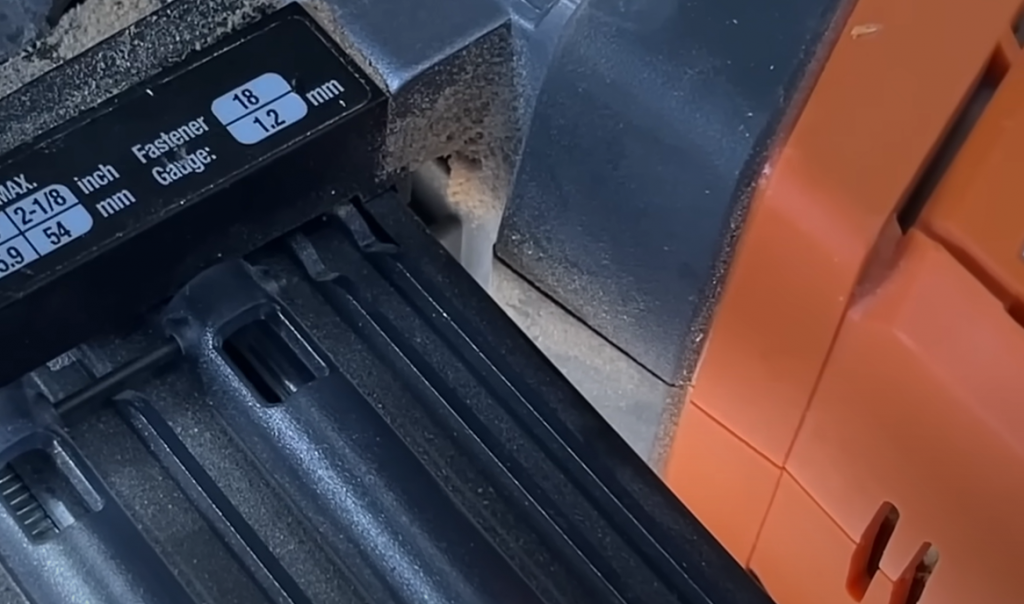
There are many other uses for pin nailers, but these are some of the most common. If you have a project that requires nails, a pin nailer is a great tool to have on hand. With this handy tool, you can easily attach all sorts of materials together, creating a professional and polished look.
Attaching roofing felt
Roof felt is frequently used as an underlayment for shingles. The felt may be nailed to the roof deck with a pin nailer, providing leak protection.
Hanging drywall
Hanging drywall is a relatively easy task when you have the proper tools. A pin nailer can help make the job go even smoother by holding the drywall in place while you attach it to the studs.
There are many other uses for pin nailers, but these are some of the most common.
With this handy tool, you can easily attach all sorts of materials together, creating a professional and polished look.Installing insulation
Installing insulation is a necessary part of many home improvement projects. A pin nailer can help make the job go more quickly by holding the insulation in place while you attach it to the wall.
Building decks
If you’re building a deck, a pin nailer can be used to attach the boards together. The small nails won’t be visible, providing a clean and polished look.
Securing metal roofing
Metal roofing is becoming increasingly popular due to its durability. A pin nailer can be used to secure the metal roofing in place, ensuring that it will last for many years.
Repairing fences
A pin nailer may be used to mend fences, gates, and other outdoor structures. The small nails’ compact nature aids in the fence’s repair.
What To Look For When Buying A Pin Nailer
Nose Tips
The tip of the pin nailer is one of the most important aspects to look at when choosing a model. Some have flat tips that are great for working in tight spaces, while others have slightly rounded tips that help to prevent leaving marks on your workpiece. There are also models with interchangeable tips, so you can choose the one that best suits your needs.
Nose guards are another important feature to look for. This helps to protect the tip of the pin from becoming damaged, and also helps to keep your fingers safe from being accidentally nailed by the tool.
Fastener Length
Most pin nailers will have a maximum fastener length of around two inches. This is plenty for most applications, but if you need to use longer fasteners, you’ll need to choose a model that has a higher capacity.
Fastener Depth Control
Some models also come with an adjustable depth of drive, which allows you to control how far the fastener is driven into the wood. This can be handy for avoiding splitting the wood or driving the fastener too deep.
Easy Loading
Most models come with a loading system that makes it quick and easy to get your nails into the gun. You can also expect your pin nailer to have a safety trigger that prevents accidental firing.
Comfortable Triggers
One of the main things you’ll notice about a pin nailer is that it has a comfortable trigger. This is important because you don’t want to have to worry about your finger slipping while you’re trying to nail something into place.
Choice Of Fasteners
Most pin nailers will use either 18-gauge or 23-gauge fasteners. The smaller the number, the thicker the fastener. You’ll want to choose the right size for your project.
This is important because you don’t want to fatigue your arm while you’re working on a project.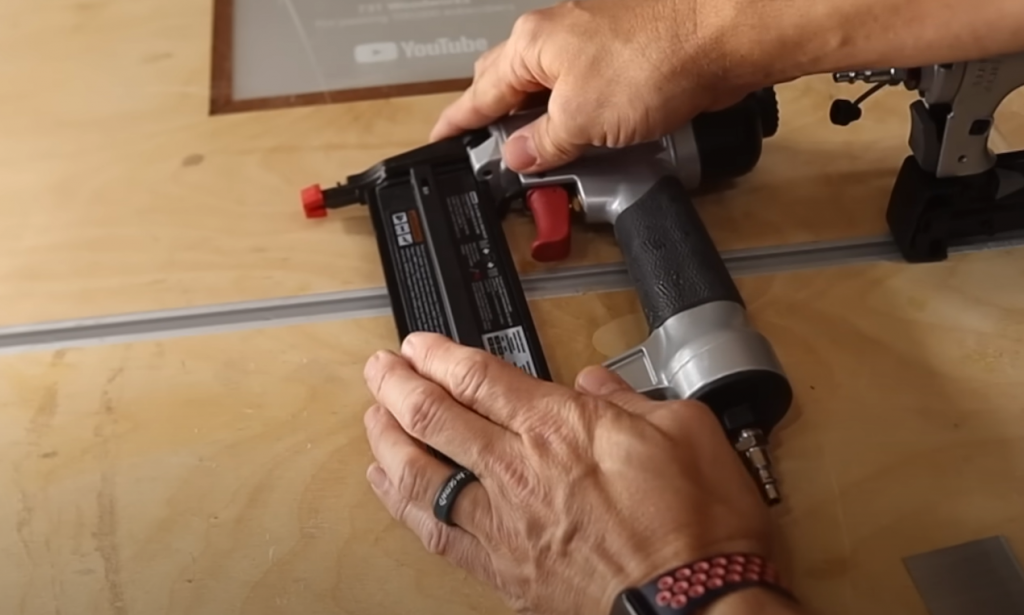
If you’re looking for a versatile and affordable way to finish your projects, then a pin nailer is a great choice. It’s easy to use and can help you get the job done quickly and efficiently.
FAQ
Can you use a pin nailer for baseboards?
No, a pin nailer can’t be used to attach baseboards. Baseboard installation is not possible with headless nails.
A finish nailer with a 15-gauge or 16-gauge gauge is preferable to a pin nailer for installing baseboards [6].
What is the difference between a pin nailer and a finishing nailer?
A pin nailer is a type of pneumatic nail gun that uses very thin, long nails. They are typically used for tasks that require a smaller head or no head at all, such as attaching molding or trim. Pin nails are also less likely to split the wood than other types of nails, making them ideal for delicate projects.
Finishing nailers, on the other hand, are larger and thicker than pin nails. They can be used for a variety of tasks, including nailing baseboards and crown molding, installing cabinetry, and more. Finishing nails have a larger head than pin nails, which helps to prevent them from pulling out over time [7].
What is a 23-gauge pin nailer used for?
Pros will often use a 23-gauge pin nailer on delicate moldings or pre-finished trim. An 18-gauge wire has the propensity to split wood, especially hardwoods, or leave ugly scars in these situations. The 23-gauge size is thin enough to avoid this problem but still provides the holding power you need.
This type of nailer is also good for working with small objects like picture frames, where a brad nailer would be too large and leave unsightly holes. In general, a 23-gauge pin nailer can be used for anything that requires a small headless nail [8].
Can you use a pin nailer for crown molding?
Some DIYers claim that crown molding may be installed with a pin nailer. Others maintain that it is too lightweight. The truth is, it depends on the specific crown molding you are using. If the molding is lightweight and made of softwood, then a pin nailer may work. However, if the molding is heavier or made of hardwood, then you will likely need to use a finishing nailer.
What kind of nail gun do you need for baseboards?
You may use a 16-gauge finish nailer because it is quite versatile. Carpenters utilize them for a number of jobs, including inside trim, baseboard, and crown. They’re ideal for nailing down tongue and groove flooring like near a wall or in a closet where you can’t use a flooring nailer [9].
Can you use a pin nailer for upholstery?
Depending on the fabric of your upholstery, any fine wire or medium wire staples may be used for upholstery. The most frequent staples for furniture are 20 and 22-gauge [10].
Which is better: a 16 or 18-gauge nail gun?
The answer to this question depends on your needs. If you are looking for a versatile nail gun that can be used for a variety of tasks, then the 16-gauge finish nailer is a good option. If you need a stronger nail gun for heavier duty tasks, then the 18-gauge finishing nailer is a better choice.
Which is the bigger – 22 or 25-gauge needle?
A 22-gauge needle is the bigger one. It is most commonly used for upholstery and general repairs. 25-gauge needles are thinner and mostly used for detailed work like miniature woodworking or model making. Most pin nails have very thin shafts and smooth heads, which makes them ideal for use in delicate applications where a larger nail would mar the surface.
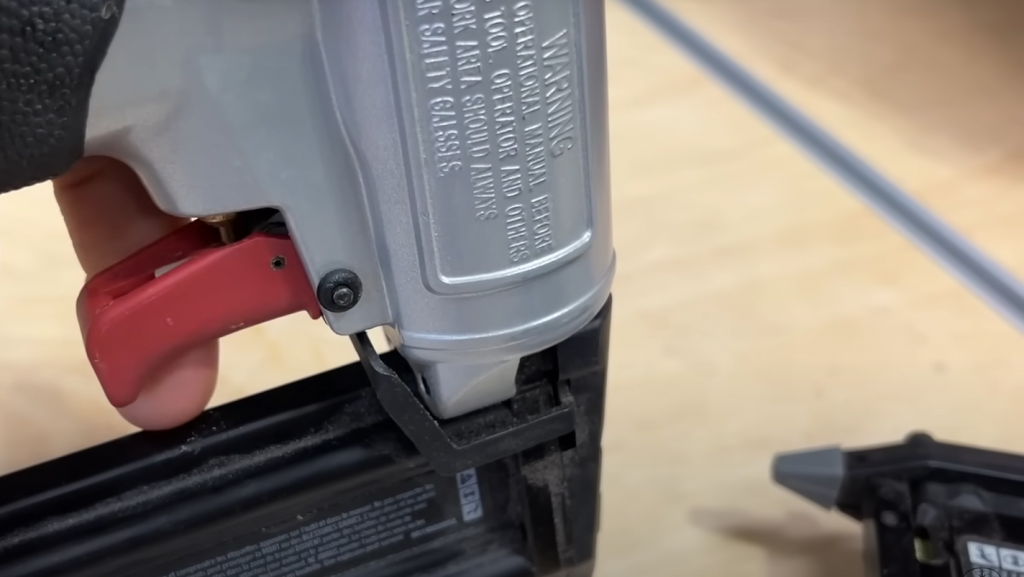
Pin nails are also useful for holding together two pieces of wood that will be glued. The small hole left by the pin nail is easily filled with wood glue, and the bond between the two pieces of wood is very strong.
Can you hammer pin nails?
With the proper project and material, you can achieve a fine finger-nailing job. Sinking brad nails near to the surface is simple enough with a hammer. Some materials are more difficult to drive brad nails into, so you may wish to choose masonry finishing nails instead [11].
Useful Video: Pin Nailer vs Brad Nailer – What’s the Difference? | Tool Reviews | The Saw Guy
References:
- https://canadianhomeworkshop.com/1411/tips-tools/portable-power-tools/the-pros-of-pin-nailers
- https://housegrail.com/pin-nailer-vs-brad-nailer
- https://canadianhomeworkshop.com/1411/tips-tools/portable-power-tools/the-pros-of-pin-nailers
- https://topwoodworkingadvice.com/what-is-a-23-gauge-pin-nailer-used-for
- https://toolsprokit.com/what-is-a-pin-nailer-used-for
- https://sawsonskates.com/pin-nailer-vs-brad-nailer
- https://www.woodshopdiaries.com/finish-vs-brad-vs-pin-nailer-vs-stapler-which-is-best
- https://www.nailgundepot.com/blog/comparing-brad-nailers-and-pin-nailers.html
- https://www.thisoldhouse.com/tools/21273347/how-to-choose-a-finish-nailer
- https://www.stapleheadquarters.com/upholstery-staples
- https://uooz.com/can-you-use-hammer-with-brad-nails
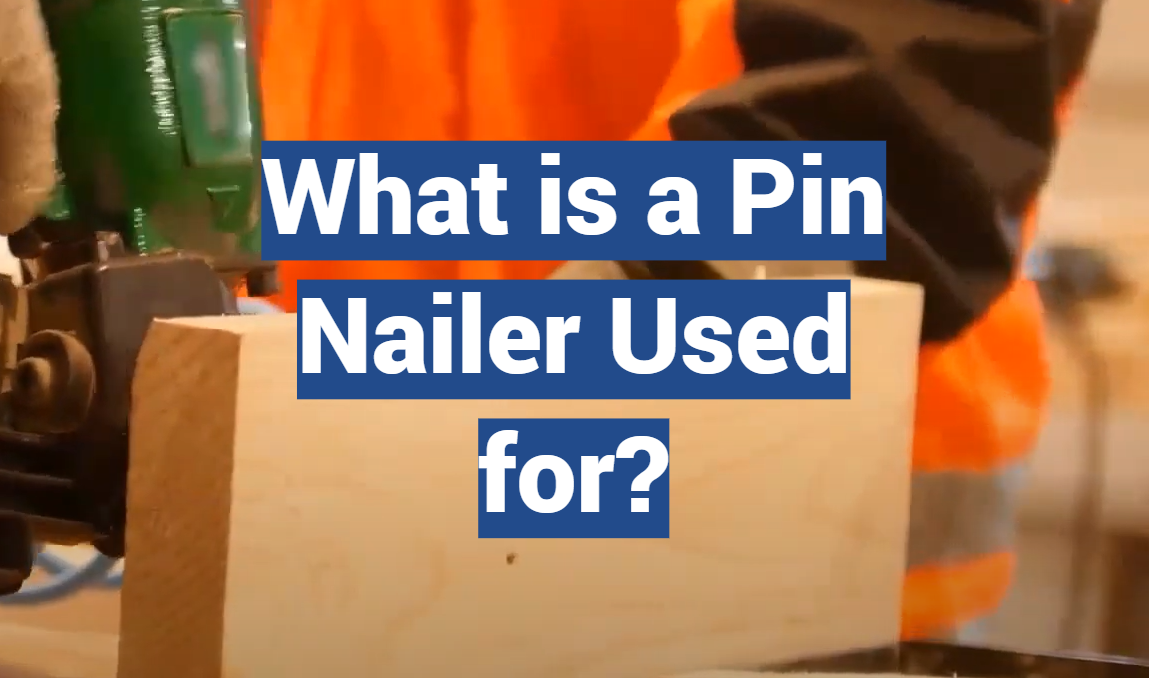


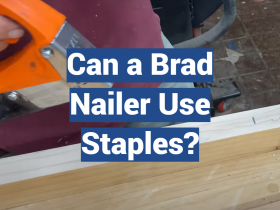
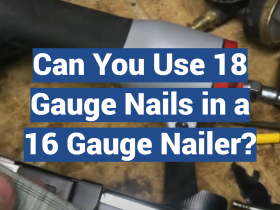
Leave a Reply